 September 14, 2017 John E. Ross, KD8IDJ, Editor
| ||||||||||
Amateur Radio Volunteers Respond to Historic Hurricane Irma Hurricane Irma is history, but the recovery continues. ARRL West Central Florida (WCF) Section Manager Darrell Davis, KT4WX -- who is also Hardee County Emergency Coordinator -- reported that the storm's eye passed over the Hardee County emergency operations center just before midnight EDT on September 10. The storm, which left death and destruction in its wake, eventually moved inland, carrying with it heavy rainfall and consequent additional flooding. By mid-week, FEMA had flagged most of the Florida peninsula for "significant river flooding," imminent or occurring. Irma also has left many in Florida without electrical power.
Davis said he was grateful for the Ham Aid equipment -- four hand-held transceivers and one mobile transceiver -- that ARRL sent to Florida as Irma's arrival was imminent. The once-powerful and persistent Category 5 hurricane made landfall near Naples, Florida, on September 10 as a Category 2 storm, after raking the Florida Keys. Thirty Florida counties were under mandatory evacuation orders, and thousands took advantage of Red Cross shelters. SKYWARN nets activated in the West Central Florida Section and elsewhere to gather severe weather information, and Florida's Statewide Amateur Radio Network (SARnet) conducted a coordination and assistance net to help communicate between the county EOCs and the State EOC and to provide assistance to Amateur Radio operators in other ways, time permitting. The priority during the weekend was tactical shelter communication, EOC communication, and SKYWARN nets as Hurricane Irma approached. "At our own EOC, the data from APRS stations was very important to our decision makers in the EOC to allow Fire and EMS back on the road, post storm," Davis reported. "Our repeater went off the air due to power failure. I went to reverse and listened to the repeater input and transmitted on the output, and we maintained communications through the storm." Davis said the Ham Aid mobile transceiver went to the area's special needs shelter, primarily due to the fact that a handheld's signal was hampered by the building.
Northern Florida SM and Florida Emergency Support Functions 2 (ESF2 -- communications) Liaison Steve Szabo, WB4OMM, said on September 13 that the Florida EOC may need Amateur Radio operators to provide communication support in the Florida Keys. Volunteers will need a dual-band handheld with earphone/headset, external gain antenna, spare batteries, and a charger. Food and sleeping quarters are available, but responders must be self-sufficient for other personal needs. Deployment requests will vary. "Do not self-deploy," Szabo stressed. "These missions will be filled through the State of Florida EOC ESF2 Liaison." Interested hams should register, selecting "Casework/Recovery" under Type of Work, and "Amateur Radio" under Volunteer Skills. Potential volunteers will be notified and can accept or decline an assignment. Volunteers may be required to pass a background check. The Salvation Army Team Emergency Network (SATERN) was on extended monitoring status from September 6 until September 13 for Hurricane Irma. The Hurricane Watch Net (HWN) stood down on September 11 after more than 6 days of activation for Irma as well as for hurricanes José and Katia. "Once Irma was downgraded to a Tropical Storm, our focus shifted to collecting post-storm reports and handling emergency and priority traffic only," HWN Manager Bobby Graves, KB5HAV, said. He anticipated that nets such as the HWN would "be busy for days" handling health-and-welfare, emergency, and priority traffic. At mid-week, the HWN was at at Alert Level 2 -- Monitoring Mode, keeping an eye on now-Tropical Storm José.
As if Earth's weather was not bad enough already, an X-class solar flare at around midday on Sunday, September 10, hobbled the HF bands. The widespread communication blackout lasted for nearly 3 hours and "could not have happened at a worse time," Graves said. "But," he added, "we cannot control Mother Nature, only work around her." Earlier solar flares also had affected HF propagation. The VoIP Hurricane Net activated over the weekend to track the impact of Irma as well as of Hurricane Katia, which made landfall on the coast of southeastern Mexico. The activation continued until September 11. A listing of reports received from Amateur Radio operators on the VoIP Hurricane Net, weather stations monitored across the region, and relayed reports from social media are on the VoIP Hurricane Net viewer. Puerto Rico fared better than had been expected. "We were lucky that all we got were tropical storm winds," said Puerto Rico Section Public Information Coordinator Angel Santana-Diaz, WP3GW, adding that the storm did down some trees on the island. While electrical power was up, there was still no water, Santana said on September 11.
"Some repeater systems did operate without problems," Santana-Diaz said. "Our Section Emergency Coordinator remained in contact with the Red Cross," he said, and on September 9, ham volunteers went to the island of Culebra to establish HF communication there to keep in touch with the Red Cross office in San Juan, where ARRL Puerto Rico Section Manager Oscar Resto, KP4RF, was stationed. More than 350 Puerto Rico residents took advantage of Red Cross shelters, while another 150 or so evacuated to shelters in the US Virgin Islands. Santana-Diaz said the Friendly Net and Caribbean Emergency Weather Net (CEWN) were active too. In Cuba, Irma caused destruction from one end of the island to the other. Cuban Amateur Radio Federation (FRC) information officer Joel Carrazana Valdés, CO6JC, said some 1,200 radio amateurs from all over Cuba "were active at the disposal of the defense councils, providing one of the more valuable and necessary services." Radio Miami International (WRMI) reported on its Facebook page that Hurricane Irma did extensive damage to the station's studio/transmitter site in Okeechobee, Florida. "Two antenna towers are down and many poles holding transmission lines are also down. Power went out at around 2030 UTC Sunday, and it may not be restored for days. Meanwhile, all transmitters are off the air," WRMI reported.
"We are off the air since Sunday night," WRMI Manager Jeff White told ARRL. With internet service also out, the station doesn't even have a livestream outlet. The Okeechobee site includes 14 transmitters (most of them 100 kW) and 23 antennas beamed in 11 different directions around the globe. As Irma stormed the Caribbean, Amateur Radio was a crucial link in the US Virgin Islands. Section Manager Fred Kleber, K9VV, was in contact with the Red Cross and getting considerable help from FEMA, the National Guard, and US Navy vessels. He told ARRL on September 7 that responders were in search-and-rescue mode on St. Thomas, St. John's, and St. Croix -- all of which were severely impacted. Work continued on evacuating people from the islands in St. Thomas Harbor, damaged hospitals, and other buildings, and providing shelter. Traffic was being passed from Kleber's location to stations in Puerto Rico and to the Hurricane Watch Net, but solar flares compromised communication. W1AW at ARRL Headquarters was in monitoring mode through last Saturday and activated on Sunday. In Irma's wake, radio amateurs in the Eastern Caribbean have been passing information into and out of the affected area, Eric Mackie, 9Z4CP, told ARRL on September 12. The Caribbean Emergency and Weather Net (CEWN) has been using 7.162 MHz, 7.188 MHz, and 3.815 MHz, and has requested clear frequencies. Help the Ham Aid Response Effort in Florida and the US Virgin Islands Due to this busy hurricane season, ARRL's inventory of Ham Aid kits has been severely depleted. ARRL's Ham Aid program loans Amateur Radio equipment kits to established ARES and partner agencies during disaster response, in order to establish Amateur Radio communications support.
ARRL has been supplying Ham Aid kits for the Hurricane Irma emergency response efforts in Florida and the US Virgin Islands. Thanks to Tim Duffy, K3LR, of DX Engineering, for quickly processing ARRL's purchase of six HF transceivers, which enabled Ham Aid to respond within 24 hours to an equipment request from the US Virgin Islands. ARRL used FEMA resources for shipping, and the gear is on its way via contracted courier to San Juan, Puerto Rico, where it will be staged for deployment. More Ham Aid equipment is needed for future requests. Please help ARRL in this effort by contributing to the Ham Aid Fund, which is used to purchase new equipment as well as to refurbish/repair previously deployed equipment. Your contributions to Ham Aid are 100% tax deductible. To make a donation online, go to https://www.arrl.org/arrl-donation-form and select "Ham Aid" from the ARRL donation form. To donate by mail, follow the instructions on the web page, noting "Ham Aid" on the memo line of your check. Emergency Net Activated in Wake of Earthquake in Mexico The National Emergency Net of the FMRE -- Mexico's national Amateur Radio association -- activated on 7.060 MHz (the net also operates on 3.690 and 14.120 MHz) to handle any emergency traffic after a late-evening earthquake occurred off Mexico's coast on September 7. Radio amateurs not involved in the earthquake disaster should avoid those frequencies, if active.
The Doctor Will See You Now! "How High is High Enough" -- a discussion on the effects of antenna height -- is the topic of the latest episode of the "ARRL The Doctor is In" podcast. Listen...and learn! Sponsored by DX Engineering, "ARRL The Doctor is In" is an informative discussion of all things technical. Listen on your computer, tablet, or smartphone -- whenever and wherever you like!
Enjoy "ARRL The Doctor is In" on Apple iTunes, or by using your iPhone or iPad podcast app (just search for "ARRL The Doctor is In"). You can also listen online at Blubrry, or at Stitcher (free registration required, or browse the site as a guest) and through the free Stitcher app for iOS, Kindle, or Android devices. If you've never listened to a podcast before, download our beginner's guide. QST Announces 2017 Antenna Design Competition Winners QST has announced the winners of its 2017 Antenna Design Competition.
Winners will receive certificates and cash prizes. The winning designs are also eligible for publication in QST and other ARRL media. 160 Meters and Lower Frequencies First Prize: Theodore P. Algren, KA6W, "A Linear-Loaded Low-Angle Radiating Delta Loop for 160" Second Prize: Joseph H. Reisert Jr., W1JR, "160 Meter Unipole Implementation" Third Prize: Dave Ahlgren, K1BUK, "A Super Slinky Antenna for Top Band" 80 Through 10 Meters First Prize: Alan Christman, K3LC, and Joseph Johnson, K3RR, "A Three-Element Reversible 80-Meter Vertical Moxon Yagi" Second Prize: Jacek Pawlowski, SP3L, "Cat's Whiskers -- A Broadband Multi-Loop Antenna" Third Prize: Herb Allred, N4HA, "A 20-Meter Two-Element Wire 'IV' Beam" 6 Meters and Higher Frequencies First Prize: John Portune, W6NBC, "A Low Profile 2-Meter Mobile Antenna" Second Prize: David P. Finell, N7LRY, "A 2-Meter Quadrifilar Helix Antenna" Third Prize: Paul J. Kiesel, K7CW, "A 16-Element 6-Meter Collinear Array" Honorable Mentions The judges also selected several entries for Honorable Mentions. While these individuals will not receive prizes or certificates, their designs will be eligible for publication in QST. 80 Through 10 Meters Donald P. Crosby, W1EJM, "A Mechanically Adjustable Flagpole Inverted L" Roger Posthumus, WB2YQA, "An 80-10 Meter Vertical with Inductive Isolation" Richard Kiefer, K0DK, "A 40-Meter Rotatable Dipole on a 24 Foot, 20 Meter Yagi Boom" Bernard Wehrli, HB9ALH, "An Optimum Height Inverted V for 20, 15, and 10 Meters" Andrew Siegel, N2CN, "A Two-Element 40-Meter Wire Yagi" Robert Perkins, W0JEE, and Bud Hammers, W5RPU, "A 1,200-foot Horizontal Loop Antenna for MF through HF" 6 Meters and Higher Frequencies Scott McCann, W3MEO, "A Portable Two-Element 6-Meter Yagi" Yasuhiro Kawai, JH1KOJ, "Half Vivaldi; A Wide-Band Exponential Antenna" Axel H. Lehmann, DG3AL, "A Compact, Lightweight Moxon Array for 2 Meters and 70 Centimeters" Hans E. Heyn, KB9MFQ, "A Horizontally Polarized 6-Meter Squalo for SSB" Collegiate Amateur Radio Symposium Holds Second Annual Meeting The Amateur Radio Club at Yale University (W1YU) was the host for the 2nd annual Collegiate Amateur Radio Initiative (CARI) forum at the ARRL New England Division Convention, September 8-10, in Boxboro, Massachusetts. ARRL CEO Tom Gallagher, NY2RF, who -- in light of the increasing number of reactivated and newly formed radio clubs at colleges and universities -- has been a prime mover behind the League initiative, opened the session. Four presentations by participating institutions followed.
Scott Westerman, W9WSW, from Michigan State University, outlined simple promotional approaches for collegiate radio clubs to increase membership. Undaunted by the fact that Hurricane Irma caused the cancellation of his travel plans, Westerman addressed the forum via Skype. Westerman's own website is dedicated to Amateur Radio club growth.
West Point Club members and cadets Jonathan Morton, KE8EBT; Logan Leahy, KD2MWT; Michala Wyrsch, and Christina Harris shared their experiences as members of the club, including remote operations.
Case Western Reserve University Amateur Radio Club Faculty Advisor David Kazdan, AD8Y, Treasurer Nathaniel Vishner, KB1QHX, and Vice President-Secretary Rachel Boedicker, AC8XY, discussed the University's Amateur Radio activities. Amateur Radio at Case is intertwined with the electrical engineering curriculum, and Kazdan spoke about the role of the faculty advisor in the collegiate club and the importance of working collaboratively with the engineering faculty to promote and grow a collegiate club. The forum concluded with a round table discussion about the state of college Amateur Radio, moderated by W1YU President Scott Matheson, N3NFP, who earned his Amateur Extra-class license at the convention. Participants shared challenges and ideas regarding what works and what doesn't when rebuilding a collegiate club. Read more. Not All "Intruders" on Ham Bands are Illegal -- But a Lot of Them Are The monthly newsletter of the International Amateur Radio Union Region 1 Monitoring Service (IARUMS) typically makes for some interesting reading. While the reports that come from more than 2 dozen contributors can be a bit visually dense, the content conveys the impression that that there are myriad intruders on the Amateur Radio bands. However, not all of them are illegal, as IARUMS points out, but a lot of the signals heard are not supposed to be where they were monitored. The individual reports can be a bit humorous too.
"Get the grub, and I'll talk to you later this evening," was a snippet of a conversation between two fishermen -- identified as Mick and Jack -- that an Irish Radio Transmitters Society (IRTS) monitor overheard on 3.570 MHz and reported to the IARUMS. The IRTS said the chatter was accompanied on both sides by "loud motor noise," and, if that were not sufficient detail, it pointed out that both men had Galway accents. Intruding signals from fishing crews throughout IARU Region 1 are commonplace. More blatant are the repeat offenders, such as the "Chinese foghorn" heard by over-the-horizon (OTH) radars on several frequencies in the exclusive Amateur Radio 20-meter allocation, as well as on 15 and 40 meters. IARUMS Region 1 Coordinator Wolf Hadel, DK2OM, said the signals, 10 kHz wide and with 50 and 66.66 sweeps per second, transmit in burst mode and often jump frequencies.
Adding a little mystery and intrigue to the compilation was a report from a radio amateur in the UK citing a "female voice with encrypted messages" on 14.212 MHz, believed to originate with the Ukraine Foreign Intelligence Service in Rivne. In the "miscellaneous or bad news" category were some repeat offenders, such as Radio Hargaysa in Somalia on 7,120.0 kHz; Radio Eritrea and white noise interference from Radio Ethiopia persisting on 7,140.0 kHz and 7,180 kHz; a third harmonic of Radio Tajik on 4,765 kHz, showing up on 14,295.0 kHz; the Sound of Hope from Taiwan on 18,080 kHz; the Russian Navy's CW on 21,438.0 kHz, and Radio Iran "in burst mode" on 28,960.0 kHz daily. True intruders are those appearing on exclusive Amateur Radio frequency allocations. Some domestic Amateur Radio HF allocations outside Region 2 (the Americas), such as 7.200 to 7.300 MHz, are either shared with other services or not available to radio amateurs. Read more. Dr. Scott Wright, K0MD, Tapped as New NCJ Editor Dr. Scott Wright, K0MD, of Rochester, Minnesota, will assume the helm of National Contest Journal (NCJ) starting with the January/February 2018 issue. He will succeed Pat Barkey, N9RV, who has served as NCJ's editor since 2015. Licensed as a teenager in 1977, Wright is a very active contester and operator.
"I started contesting actively in 2006 and enjoy all types of contests," Wright said. "I've designed my home contest station to perform well in the DX contests -- CQ WW, CQ WPX, ARRL DX, and others." He has set up his station for SO2R (single operator, two radio), or multi-one or multi-two contesting. He's also an active DXer, with more than 315 DXCC entities to his credit. An ARRL Life Member and Maxim Society member, Wright will become the magazine's 16th editor. He is a cardiologist at the Mayo Clinic in Rochester, and three of his four children are radio amateurs. Wright has contested from outside the US, logging 10 years of activity from Turks and Caicos Islands (VP5H on SSB and VP5S on CW) with Glenn Johnson, W0GJ, and other members of the Minnesota Wireless Association (MWA), where he's a member. He also has operated from Chile as CE2/K0MD, and from China's B1Z club station.
Wright said Barkey will continue as an NCJ advisor and contributor. Published by ARRL, NCJ is mailed to subscribers six times a year. Read more. In Brief...
The K7RA Solar Update Tad Cook, K7RA, Seattle, reports: Over the September 7-13 reporting week, sunspot numbers and solar flux were lower, while geomagnetic indicators were higher. The average daily sunspot number declined from 87.3 to 45, and the average daily solar flux dropped from 114.1 to 97.6.
Predicted solar flux is 75 on September 14-17; 77 on September 18-20; 85, 90, 92, 95, 98, 105, 110, 115, and 120 on September 21-29; 125 on September 30-October 1; 120, 115, 110, 100, 95, 90, 85, 83, 81, and 84 on October 2-11; 83 on October 12-14; 84 on October 15; 85 on October 16-17; 88, 90, 92, 95, 98, 105, 110, 115, and 120 on October 18-26, and 125 on October 27-28. The predicted planetary A index is 28, 26, and 20 on September 14-16; 12 on September 17-20; 5 on September 21-22; 8, 5, 8, and 5 on September 23-26; 20 on September 27-29; 18, 15, 12, and 8 on September 30-October 3; 5 on October 4-7; 7 and 12 on October 8-9; 30 on October 10-12; 20 and 10 on October 13-14; 5 on October 15-16; 8, 5, 5, 8, 5, 8, and 5 on October 17-23; 20 on October 24-26, and 18 and 15 on October 27-28. Here is a September 7 video from Dr. Tamitha Skov: Sunspot numbers for September 7-13, 2017 were 94, 89, 49, 38, 23, 11, and 11, with a mean of 45. The 10.7-centimeter flux was 128.5, 116.8, 107.2, 100.2, 79.9, 75.5, and 75.1, with a mean of 97.6. Estimated planetary A indices were 38, 96, 6, 7, 11, 18, and 15, with a mean of 27.3. Estimated mid-latitude A indices were 23, 50, 6, 12, 8, 16, and 13, with a mean of 18.3. Send me your reports or observations. Just Ahead in Radiosport
See the ARRL Contest Calendar for more information. For in-depth reporting on Amateur Radio contesting, subscribe to The ARRL Contest Update via your ARRL member profile e-mail preferences. Upcoming ARRL Section, State, and Division Conventions
Find conventions and hamfests in your area.
. .
Subscribe to...
Free of charge to ARRL members...
Find ARRL on Facebook! Follow us on Twitter, Snapchat @ARRLHQ, and Instagram! | ||||||||||
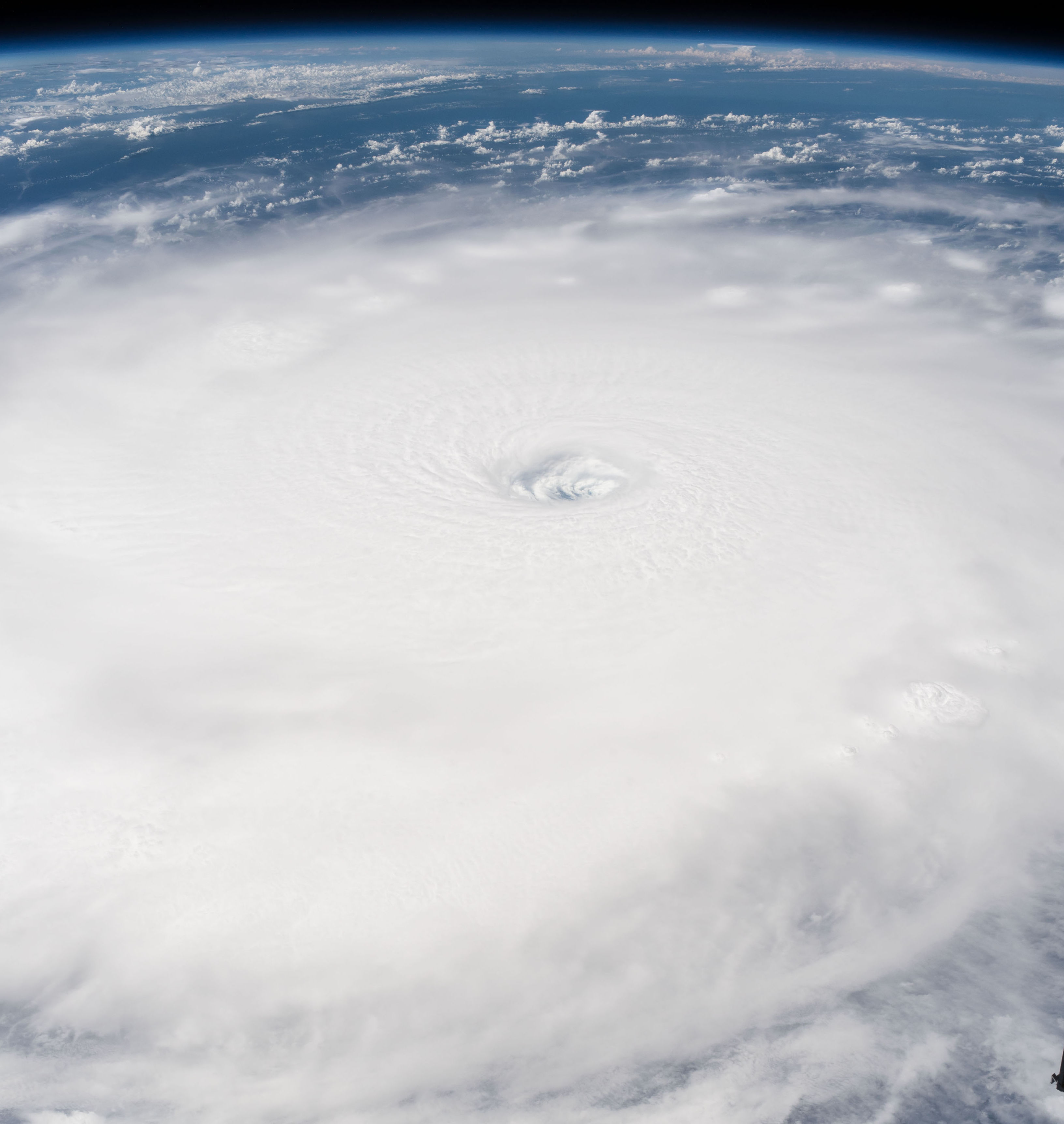
.jpg)
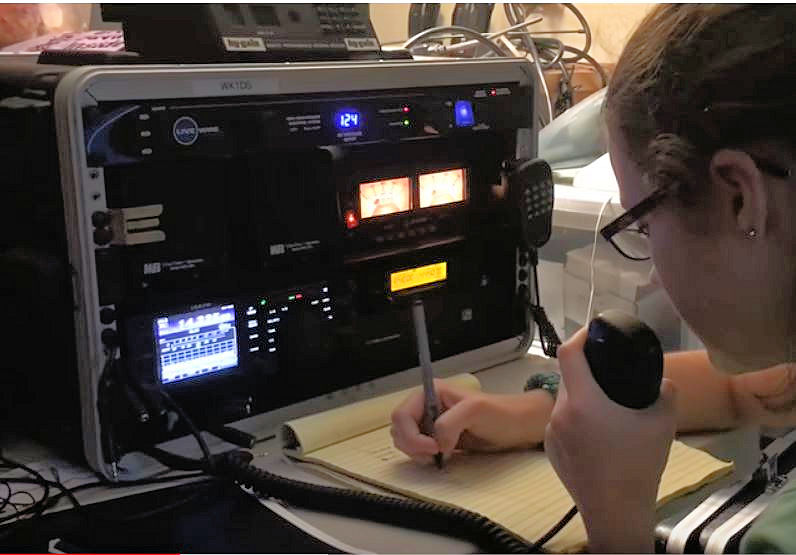
.jpg)
.JPG)
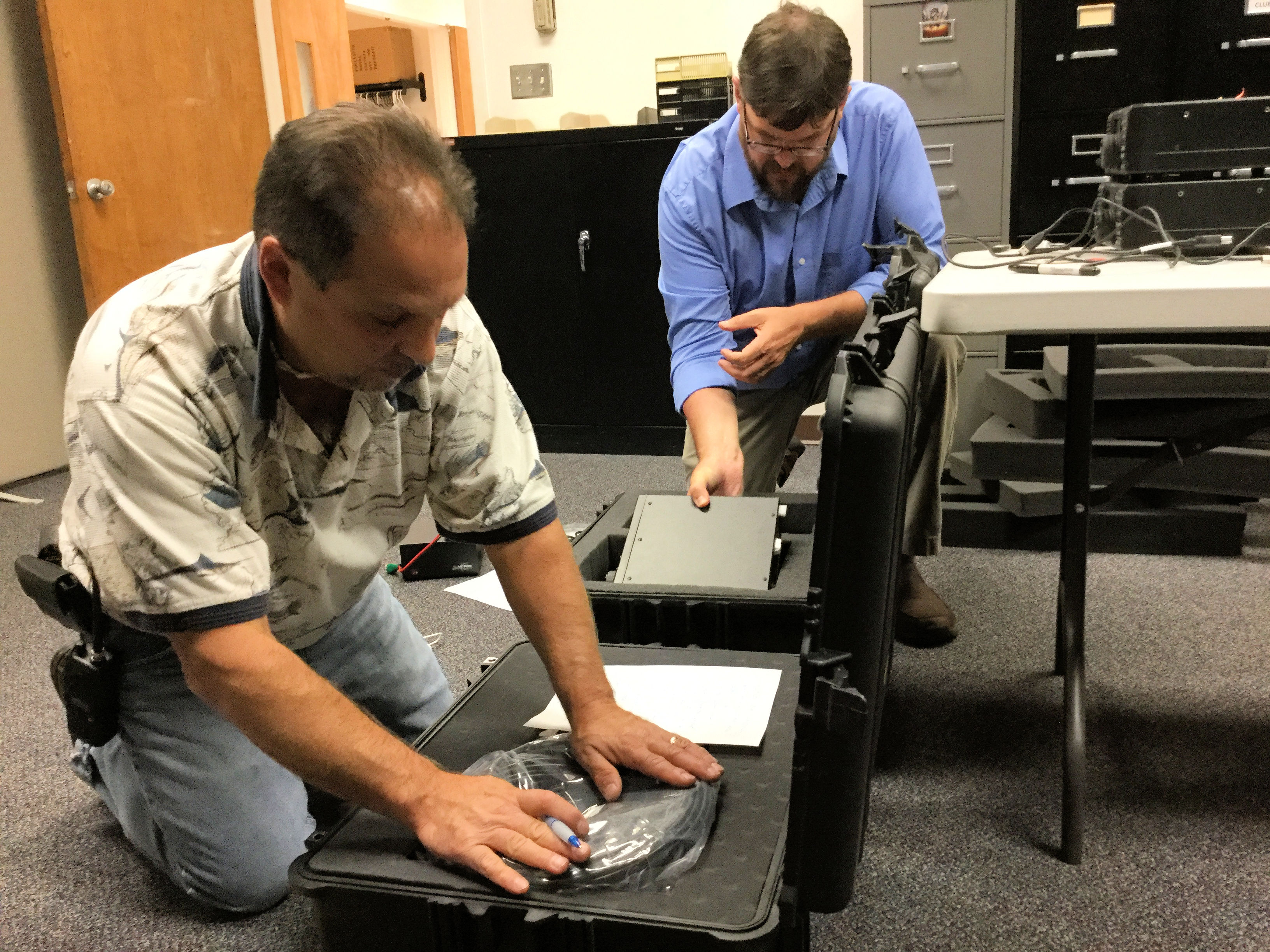
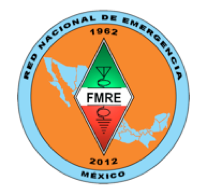 The potent magnitude 8.2 earthquake off Mexico's Pacific Coast -- the strongest in 100 years -- resulted in multiple fatalities. The tremor was felt around Central America. At 0500 UTC, Jose Arturo Molina, YS1MS, reported feeling a strong temblor within a few minutes of the earthquake in Chiapas, near Mexico's border with Guatemala. In Honduras, Antonio Handal, HR2DX, located on the North Coast, also reported feeling the quake. A state of emergency continues in southern Mexico, and new aftershocks occurred this week, raising the possibility that the National Emergency Net (RNE) could reactivate on 7.060 and 14.120 MHz. -- Thanks to IARU Region 2 Coordinator Cesar Pio Santos, HR2P, for some information
The potent magnitude 8.2 earthquake off Mexico's Pacific Coast -- the strongest in 100 years -- resulted in multiple fatalities. The tremor was felt around Central America. At 0500 UTC, Jose Arturo Molina, YS1MS, reported feeling a strong temblor within a few minutes of the earthquake in Chiapas, near Mexico's border with Guatemala. In Honduras, Antonio Handal, HR2DX, located on the North Coast, also reported feeling the quake. A state of emergency continues in southern Mexico, and new aftershocks occurred this week, raising the possibility that the National Emergency Net (RNE) could reactivate on 7.060 and 14.120 MHz. -- Thanks to IARU Region 2 Coordinator Cesar Pio Santos, HR2P, for some information Every 2 weeks, your host, QST Editor-in-Chief Steve Ford, WB8IMY, and the Doctor himself, Joel Hallas, W1ZR, will discuss a broad range of technical topics. You can also e-mail your questions to
Every 2 weeks, your host, QST Editor-in-Chief Steve Ford, WB8IMY, and the Doctor himself, Joel Hallas, W1ZR, will discuss a broad range of technical topics. You can also e-mail your questions to  Following a solicitation for entries earlier this year, members submitted nearly 100 antenna designs in three categories: 160 Meters and Lower Frequencies, 80 Through 10 Meters, and 6 Meters and Higher Frequencies.
Following a solicitation for entries earlier this year, members submitted nearly 100 antenna designs in three categories: 160 Meters and Lower Frequencies, 80 Through 10 Meters, and 6 Meters and Higher Frequencies.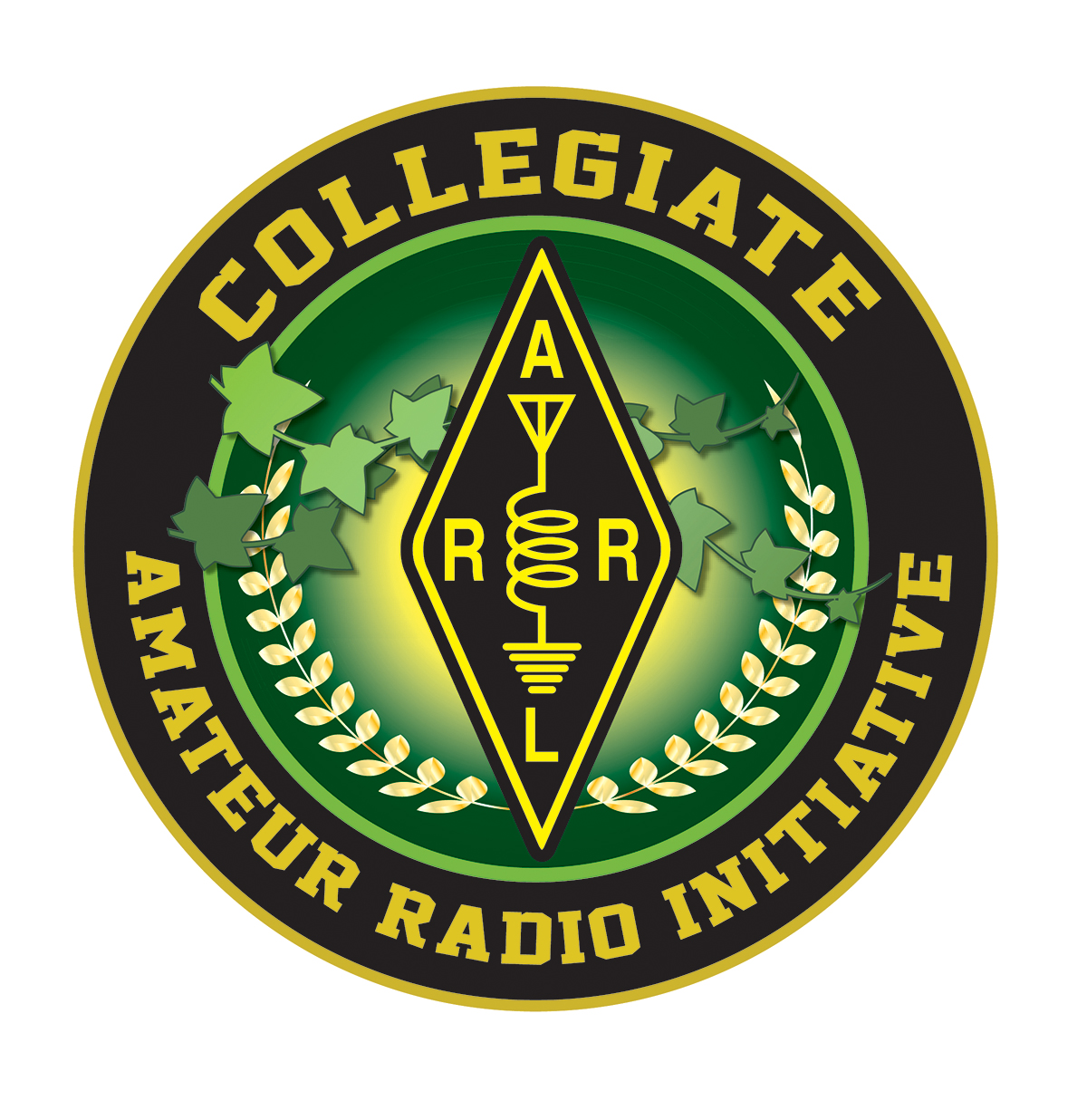 Sean Barnes, N3JQ, of Harrisburg Academy, a prep school in Pennsylvania, led off the presentations by sharing how ham radio fits into the curriculum at his small private school, where all physics students earn their Technician licenses while studying electromagnetics. Barnes said he recently compiled a matrix of 329 collegiate Amateur Radio stations for CARI, and he spent a portion of his presentation explaining the methods he used to create the database, as well as plans for its use and future maintenance.
Sean Barnes, N3JQ, of Harrisburg Academy, a prep school in Pennsylvania, led off the presentations by sharing how ham radio fits into the curriculum at his small private school, where all physics students earn their Technician licenses while studying electromagnetics. Barnes said he recently compiled a matrix of 329 collegiate Amateur Radio stations for CARI, and he spent a portion of his presentation explaining the methods he used to create the database, as well as plans for its use and future maintenance.%20Grp.jpg) Captain Matthew Sherburne, KF4WZB, and a contingent of appropriately attired US Military Academy cadets, took the stage to recount the revitalization of the West Point Amateur Radio Club. Sherburne emphasized the importance of installing cutting-edge technology when setting up a new station, and making sure there's plenty of power available for present and future needs. He also discussed the delicate issue of installing antennas at historical properties such as West Point.
Captain Matthew Sherburne, KF4WZB, and a contingent of appropriately attired US Military Academy cadets, took the stage to recount the revitalization of the West Point Amateur Radio Club. Sherburne emphasized the importance of installing cutting-edge technology when setting up a new station, and making sure there's plenty of power available for present and future needs. He also discussed the delicate issue of installing antennas at historical properties such as West Point.%20Sep%2017%20Scott%20Matheson%20N3NFP.jpg)
%20Chinese%20Foghorn%20on%2020.JPG)
.jpg) Some signals from military stations on non-exclusive Amateur Radio allocations are legal. For example, the latest IARUMS newsletter cites the STANAG-4285 military signal that showed up for a few days in August on 5,361.8 kHz. The STANAG-4285 transmissions, coming from a Navy facility in Aarhus, quit on August 28. "Many thanks to the Danish Navy for leaving this frequency!" Hadel added, noting that the Danish Navy is a primary user, and "We have to respect primary users!"
Some signals from military stations on non-exclusive Amateur Radio allocations are legal. For example, the latest IARUMS newsletter cites the STANAG-4285 military signal that showed up for a few days in August on 5,361.8 kHz. The STANAG-4285 transmissions, coming from a Navy facility in Aarhus, quit on August 28. "Many thanks to the Danish Navy for leaving this frequency!" Hadel added, noting that the Danish Navy is a primary user, and "We have to respect primary users!"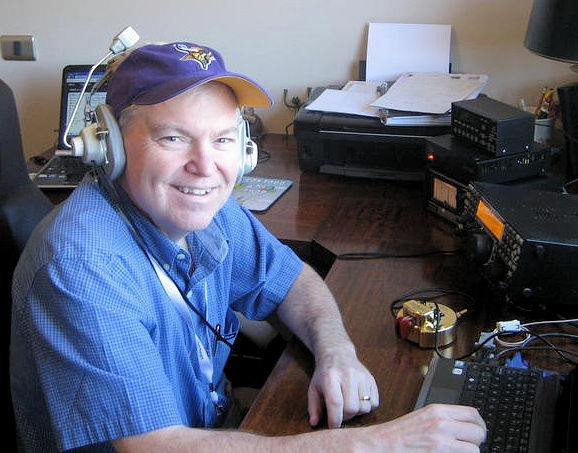
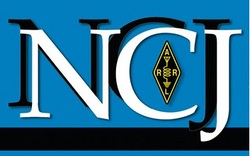 Wright organized the 2008 and 2009 W0DXCC meetings, which largely focused on contest station development. He founded the Rochester DX and Contest Club to promote radiosport involvement in southern Minnesota and northern Iowa. He also belongs to several DX clubs, prefers CW, and is a lifetime
Wright organized the 2008 and 2009 W0DXCC meetings, which largely focused on contest station development. He founded the Rochester DX and Contest Club to promote radiosport involvement in southern Minnesota and northern Iowa. He also belongs to several DX clubs, prefers CW, and is a lifetime  Two Radio Amateurs are Among Three New ISS Crew Members: After a 6-hour flight, astronauts
Two Radio Amateurs are Among Three New ISS Crew Members: After a 6-hour flight, astronauts  Students from India and Russia Building SSTV CubeSAT: Students from Russia and India are building an Amateur Radio CubeSat that will transmit SSTV images from space, The Times of India
Students from India and Russia Building SSTV CubeSAT: Students from Russia and India are building an Amateur Radio CubeSat that will transmit SSTV images from space, The Times of India 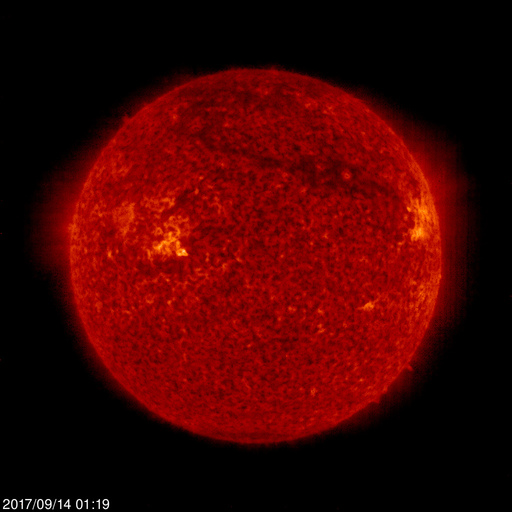 The average daily planetary A index increased from 18 to 27.3, and the average daily mid-latitude A index rose from 16.7 to 18.3.
The average daily planetary A index increased from 18 to 27.3, and the average daily mid-latitude A index rose from 16.7 to 18.3.







